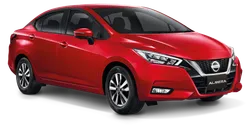

Nissan Almera Generation 2 N16 Facelift 2002 Overview
Explore the Nissan Almera and its second generation N16 facelift from 2002. Discover specifications, features, and details on this popular model in Portugal.
The Nissan Almera, a compact family car, has been a popular choice for those seeking reliability and practicality since its introduction. The second generation, known as N16, was first unveiled i...
Technical Specifications
Select Version
Dimensions
Engine
Driving
Others
History and Features
Mycarro AI
Apr 27, 2025
The Nissan Almera, a compact family car, has been a popular choice for those seeking reliability and practicality since its introduction. The second generation, known as N16, was first unveiled in 2000, but a significant facelift was introduced in 2002, enhancing both aesthetics and functionality. This article delves into the N16's features, performance, and overall appeal, particularly focusing on the facelift model from 2002.
Design and Aesthetics
One of the most noticeable transformations for the N16 Almera in 2002 was its design. While retaining its overall silhouette, various exterior elements were reworked to provide a fresh and modern look. The facelift included redesigned bumpers, new headlamps with a sleeker profile, and a revised grille that aligned better with Nissan's evolving design language. The overall effect was a more contemporary appearance that appealed to a broader audience.
Inside, the cabin of the N16 was equipped with improved materials and adjusted ergonomics. The dashboard received a minor redesign with a more modern arrangement of controls and instruments, enhancing the driver experience. The use of higher-quality plastics and comfortable seating contributed to a more inviting atmosphere for both drivers and passengers alike.
Engine Options and Performance
The facelifted Nissan Almera N16 came with several engine options designed to cater to different market needs. Most models were offered with a range of gasoline engines, including a 1.4-liter and a 1.5-liter variant, both well-known for their reliability and economy. An additional 1.8-liter option provided more power for those looking for a sportier driving experience. Diesel options were also available, appealing to buyers focused on fuel efficiency.
Performance-wise, the N16 was designed for comfort rather than high speed. The steering was light, making city driving a breeze, while the suspension offered a balance between comfort and handling, effectively absorbing bumps on the road. This focus on practicality made the Nissan Almera a sensible choice for families and daily commuters alike.
Interior Comfort and Features
The interior of the Nissan Almera N16 facelift aimed to provide maximum comfort and convenience for all passengers. Legroom and headroom were generous in the front and rear seats, making it a comfortable car for long trips. The boot space was also commendable, providing enough room to accommodate various cargo needs.
In terms of features, the N16 Almera was equipped with a range of options depending on the trim level. Higher trims offered air conditioning, an upgraded audio system, and power windows, among other conveniences. The facelift model placed a strong emphasis on user-friendly technology, reflecting the growing consumer demand for more advanced in-car features during the early 2000s.
Safety and Ratings
Safety was another area where the Nissan Almera N16 excelled. The 2002 facelift included enhancements like improved crumple zones and more robust body construction, aimed at better protecting occupants in the event of a collision. It also featured dual front airbags as standard on most trims, contributing to its favorable safety ratings.
The Almera received good marks in various safety tests of the time, which bolstered its reputation as a reliable family vehicle. As the awareness of vehicle safety increased, many consumers highlighted the importance of such features when choosing the N16.
Market Impact and Legacy
The Nissan Almera N16 enjoyed a strong market presence, particularly in Europe, where it became a favored choice among budget-conscious consumers. Similarly, its practicality, combined with modern styling and decent performance, contributed to its strong resale value and the loyalty of its owner base.
Although production of the Almera eventually came to an end, its legacy continues. The N16 generation demonstrated Nissan's capability to evolve and adapt to consumer needs, embodying a balance between practicality and contemporary styling. Enthusiasts and everyday drivers alike remember the Almera fondly, appreciating its reliability and value during its production run—a true testament to Nissan's engineering prowess.
In conclusion, the Nissan Almera Generation 2 (N16) facelift of 2002 stands out not just for its design and features but also for its approach to affordability and practical family transport. Its legacy is likely to endure, reminding us of a time when compact cars offered a blend of efficiency, comfort, and dependable performance.
